Slack vs WhatsApp
June 12, 2023 | Author: Adam Levine
49

Slack brings all your communication together in one place. It's real-time messaging, archiving and search for modern teams. Create open channels for the projects, groups and topics that the whole team shares. Slack searches whole conversations, not just individual messages, so you can find what you’re looking for no matter who said what or when they said it.
27

WhatsApp Messenger is a cross-platform mobile messaging app which allows you to exchange messages without having to pay for SMS. WhatsApp Messenger is available for iPhone, BlackBerry, Android, Windows Phone and Nokia and yes, those phones can all message each other! Because WhatsApp Messenger uses the same internet data plan that you use for email and web browsing, there is no cost to message and stay in touch with your friends.
Slack and WhatsApp are two popular messaging platforms that cater to different needs and contexts. Slack is primarily designed for team collaboration and communication in professional settings. It offers a wide range of features like channels, direct messaging, file sharing, and integrations with various business tools, making it ideal for project management and real-time collaboration within organizations. On the other hand, WhatsApp is a widely used messaging app that focuses on personal and informal communication. It provides features like individual and group chats, voice and video calls, media sharing, and end-to-end encryption for privacy.
See also: Top 10 Team Messaging platforms
See also: Top 10 Team Messaging platforms
Slack vs WhatsApp in our news:
2023. WhatsApp launches its native macOS app
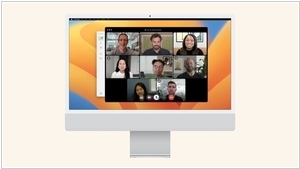
WhatsApp has introduced a new native Mac app, enabling users to engage in video calls with a maximum of eight participants and audio calls with up to 32 individuals. The redesigned app is tailored to Mac users, facilitating increased productivity on larger screens. Notably, users can seamlessly share files through drag-and-drop functionality in chats and access a more extensive chat history. After a period of testing, WhatsApp released the app in public beta earlier this year, making it available to users with Apple Silicon systems and macOS 11 Big Sur or later.
2023. WhatsApp introduces a new Windows client with better calling features
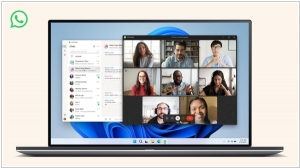
WhatsApp has unveiled an upgraded Windows client that boasts enhanced calling features and improved performance. With the latest version, users can stay connected even when their phone is inactive, thanks to multi-device synchronization. The desktop app now also enables group video calls for up to eight people and audio calls for up to 32 participants, on par with the mobile application. Furthermore, WhatsApp plans to expand the number of people allowed in a group call. In light of its multi-device linking capability that allows one account to be used across various devices, the company has been focused on enhancing its desktop experience.
2022. Slack adds persistent information layer to channels called Canvas
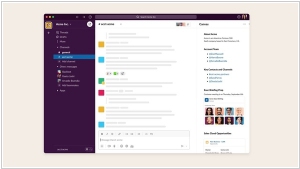
Slack has achieved considerable success in the enterprise realm by offering various communication options and seamless integration with common enterprise applications. However, until now, Slack has lacked a persistent way to share project-related information. While users could create channels to narrow down content and share documents, links, and other materials, finding them again required searching or extensive scrolling. Acknowledging this limitation, Slack has taken a step forward by combining the collaborative tooling of Quip with Slack's communication capabilities, resulting in a new tool called Canvas. Positioned alongside a channel's conversation stream, Canvas grants users access to a range of information, including data and charts, text, tasks, internal and external links, training videos, and more. This integration allows for a seamless experience where project-related information can be easily shared and accessed within the Slack platform.
2022. Slack gains new automation features, including conditional logic for workflows
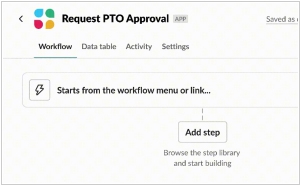
Announcing a significant update, Slack has introduced new automation features aimed at enhancing the shareability and discoverability of workflows. Building upon the existing Workflow Builder tool launched in 2019, these latest capabilities enable users to easily send workflows to other Slack users and utilize "if-then" statements to create more advanced flows. Slack's increased focus on automation aligns with the growing popularity of no-code development tools, which empower users to build apps and pipelines without requiring programming expertise. According to a survey conducted by 451 Research and FileMaker, nearly 60% of all custom apps, including automations, are now developed outside of the IT department. Furthermore, the survey revealed that 30% of these apps are created by employees with limited or no technical development skills. This trend emphasizes the importance of providing accessible automation solutions to a broader range of users.
2022. Slack is increasing prices and changing the way its free plan works
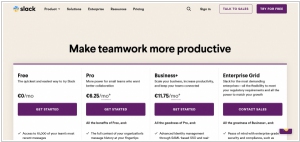
Slack, the chat platform widely used as an online watercooler for numerous teams, is implementing changes to its pricing structure and free plan functionality. For users subscribed to the "Pro" plan on a monthly basis, the price will increase from $8 per user per month to $8.75 per user per month. Similarly, for users on the annual "Pro" plan, the price will rise from $6.67 per user per month to $7.25 per user per month. As for the free plan, Slack is modifying how messages are stored. Previously, free users had access to the last 10,000 messages and 5 GB of uploads. Going forward, message retention will be based on time rather than quantity, allowing free users to view the last 90 days' worth of messages and uploads, regardless of the volume exchanged.
2022. WhatsApp's new Communities tool sounds a lot like Slack
WhatsApp has introduced a new feature called "Communities," which enables users to create groups within the app for specific organizations or groups, such as schools or apartment buildings. These communities will have sub-groups where members can discuss specific topics, and administrators will have the ability to send announcements to all members. The concept of communities on WhatsApp bears resemblance to Slack, a popular messaging platform in the digital workplace. Along with the introduction of communities, WhatsApp is implementing some additional changes to its Groups feature that also resemble Slack's functionality. Notably, users will now be able to express themselves through emoji reactions, and audio calls will accommodate up to 32 participants. The file sharing size limit has been increased to 2 GB, and group administrators have the ability to delete messages. These updates bring enhanced functionality and versatility to the WhatsApp platform.
2021. WhatsApp brings its Business API to the cloud to speed adoption
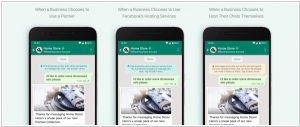
WhatsApp is introducing a new version of its WhatsApp Business API, which will now be hosted on Facebook's infrastructure in the cloud. According to the company, this shift will significantly reduce the integration setup time from weeks to just minutes. As a result, businesses can swiftly transition to WhatsApp's API platform and effectively communicate with their opted-in customers. Over the past few years, WhatsApp has been expanding its Business API to create a significant revenue stream from its otherwise free messaging service. Presently, businesses pay WhatsApp on a per-message basis, with rates varying depending on the number of messages sent and the region. Currently, numerous large enterprises, including Vodafone, Coppel, Sears Mexico, BMW, KLM Royal Dutch Airlines, Iberia Airlines, Itau Brazil, iFood, and Bank Mandiri, have already adopted the existing API (non-cloud based) to enhance their operations.
2021. Salesforce announces first integrations with Slack
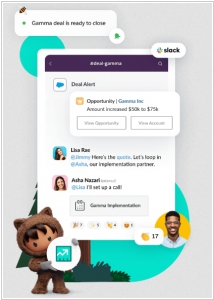
When Salesforce completed its acquisition of Slack towards the end of the previous year, it was evident that they had ambitious plans for the company. Today, the renowned CRM giant has unveiled the initial integrations that are set to benefit Salesforce customers. To begin with, the Sales Cloud now offers dedicated deal rooms. These rooms allow all parties involved in a complex sale, including internal departments such as finance and product teams, as well as external partners, to collaborate within Slack throughout the sales cycle. This enables them to stay updated on the fluctuations and progress of all sales activities. By leveraging Slack's capability to integrate external enterprise applications within its platform, the goal is to foster collaboration and discover methods to streamline and automate various Salesforce tasks. This ultimately results in faster and more efficient usage of Salesforce, eliminating the need to switch contexts in order to achieve desired outcomes.
2021. Slack now lets you DM employees in other companies
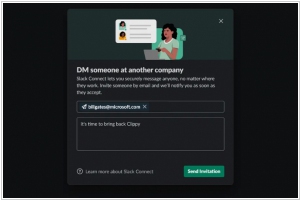
Slack has recently introduced a new feature that enables users of the platform to send direct messages to each other. Known as Slack Connect DMs, this functionality allows Slack users to privately communicate with individuals outside their own company. While primarily intended for companies collaborating with partners or clients, it can also be utilized to message friends employed at other companies. This new DM feature expands on Slack's existing Connect feature, which was introduced last year. Slack Connect primarily facilitates business collaboration through shared channels, and cross-organizational DMs represent the next significant aspect of Connect. To initiate a DM, users send a special link to start a conversation, and depending on your organization's Slack setup, Slack admin approval may be required.
2021. WhatsApp adds voice and video calling to desktop app

Support for voice and video calling is being introduced to the desktop app of WhatsApp for Mac and Windows. Initially, this feature will only be available for one-to-one calls, but the company plans to expand it to include group voice and video calls in the future. The video calls are designed to work seamlessly in both portrait and landscape orientation. Additionally, the desktop client will always remain on top of other windows, ensuring that video chats are never lost amidst a browser tab or a stack of open windows. WhatsApp conducted tests for this feature with a small group of desktop users last year.



